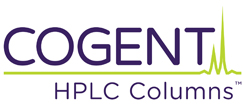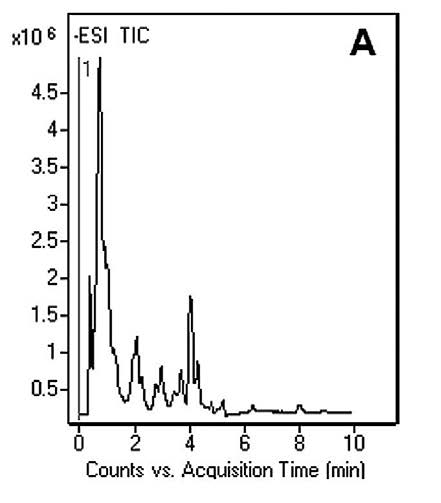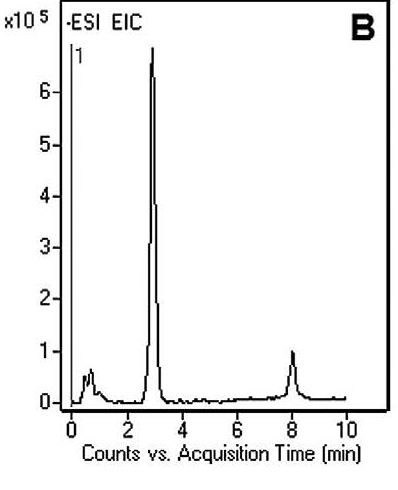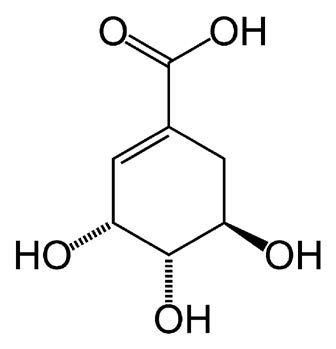Red Wine Varietal Determined by Quantity of Shikimic Acid
This Application Note presents a Method for the analysis of Shikimic Acid in Red Wine. The main advantage of using this Method is its high Specificity (mass accuracy) of this compound, the short analysis time, fast Equilibration time between runs thus more throughput, and high Repeatability (%RSD < 0.7).
The Method can be used as an analytical tool to verify the varietal authenticity of Red Wine or for Shikimic Acid in pharmaceutical preparations.
Peaks:
Figure A: Red Wine (Pinot Noir): Total Ion Chromatogram (TIC)
Figure B: Shikimic Acid in Red Wine 173.0455 m/z: Extracted-Ion Chromatogram (EIC)
Figure C: Shikimic Acid Standard 173.0455 m/z: Extracted-Ion Chromatogram (EIC)
Method Conditions
Column: Cogent Diamond Hydride™, 4μm, 100Å
Catalog No.: 70000-05P-2
Dimensions: 2.1 x 50mm
Mobile Phase:
—A: 50% Methanol / 50% DI Water / 10mM Ammonium Acetate
—B: 90% Acetonitrile / 10% DI Water / 10mM Ammonium Acetate
Gradient:
| Time (minutes) | %B |
| 0 | 95 |
| 1 | 95 |
| 5 | 50 |
| 8 | 50 |
| 10 | 95 |
Post Time: 5 minutes
Injection vol.: 1μL
Flow rate: 0.4mL / minute
Detection: ESI – NEG – Agilent 6210 MSD TOF Mass Spectrometer
Sample Preparation:
—Red Wine: Filtered, 0.45μm Nylon Syringe Filter (MicroSolv Tech Corp.). Sample for injection was diluted 1:1 using Solvent A / Solvent B mixture.
—Standard: 0.1mg / mL in Methanol, diluted 1:100 for injection using 1:1 Solvent A / Solvent B mixture.
t0: 0.4 minutes
Note 1: Shikimic Acid comes from grape skin and is always present in wines and determination of its concentration can be used as a tool to differentiate between Red Wine varieties. Shikimic Acid is an intermediate molecule produced in the Shikimate pathway. It participates in the biosynthesis of Antocyanines.
Note 2: Shikimic Acid is a key ingredient in the production of Tamiflu®, an antiviral drug for Influenza Virus A and Swine-Origin Influenza (H1N1).

Attachment
No 134 Shikimic Acid in Red Wine Analyzed with LCMS pdf 0.3 Mb Download File





